Design and Engineering
The VW Group is serious about deploying its diverse portfolio of brands in India. Keen to leverage economies of scale that come with such a strategy, the question VW and Skoda must have asked themselves is why make two specially engineered compact saloons when you can make do with one? Why indeed? And so what was born was the Vento, basically a stretched version of VW Polo, with a boot tagged onto the rear. Ideal for emerging markets like India, Russia, Brazil and future markets like China and Malaysia, this relatively compact saloon delivers mid-sized luxury for small-car money; in short, exactly what Indian customers want. What we have here isn’t the Vento however, but its near-Siamese twin, the Skoda Rapid, possibly the most Volkswagen-like Skoda ever. Sure, VW and Skoda share platforms and engines, but their cars differ considerably too. The Fabia is a completely different car from the Polo; the Jetta has very little in common with the Laura and the same holds true for the Superb and Passat as well. In comparison, you could justifiably call the new Rapid a ‘badge-engineered’ Vento, and you wouldn’t be too far off the mark.
So, under the skin the Rapid is a VW Vento. Which, of course, means it has the same long 2552mm wheelbase, the same 1699mm width and the same widened front and rear track. The Rapid, however, is marginally longer than the Vento, but that’s just down to the larger nose of the Skoda. Also identical is the suspension the Skoda uses; MacPherson struts up front and non-independent coil springs in the rear. And the brakes and steering system are identical too. Skoda however has tuned each of these components a bit differently which, as we will see later, makes this car drive quite differently from the Vento.
The Rapid may look at first like a Vento with a Fabia nose stuck on it, and in a way it is, but the Skoda looks much more attractive in the flesh. The large nose balances the elongated body nicely; Skoda designers have done a fabulous job of seamlessly merging some of the disparaging lines. The new larger fenders and mildly altered chin complete what must have been a difficult styling exercise. While the flanks of the car remain the same, down to the use of an identical mirror, Skoda has altered the boot-lid, taillights and rear bumper too. But the changes are so subtle; you’ll only spot them if you look hard.
Interior
The cabin, like the exterior, is derived from the Vento with plenty of Skoda overtones. The basic architecture of the dash is the Vento’s and the simple layout, slender central console and the large glove-box with the poor-fitting lid are all shared. Also carried over unaltered from the VW are the headlight switch, climate control, and the low quality air-con vents that, as we’ve found, have a tendency to break easily. And the seats are identical too. The front seats have good bolstering and thigh support, making them comfortable on long drives, the steering can be adjusted for height and reach and the driver’s seat can be raised and lowered too. So finding a good driving position is easy. The Rapid however comeswith slightly coarser seat fabric and some missing chrome highlights, such as the ones found around the VW’s vents.
There are plenty of Skoda parts on the inside though, and these change the character of the cabin quite a bit. Skoda’s chrome-lined steering wheel looks and feels good, the gearlever is similar to the one on the Fabia, the instrument panel comes from the Czech Republic rather than Germany and there is a Skoda audio system as well. Unlike VW, which uses a deep shade of brown, Skoda uses black for all these bits and that does cause some amount of dissonance in the cabin. Still, if you are not familiar with the Vento, you’ll find that these Skoda parts actually blend surprisingly well. Except for the gearlever, which looks like the chrome has been added as an afterthought.
With its extended wheelbase and additional width, the rear seat of the Rapid is also a good place to be. There’s plenty of legroom, the seat is wide and you get a nice airy feel when sitting in the rear. And the seat is reasonably comfortable too. You climb out feeling fresh even after a long drive and this is also true if you are tall. But it could have been nicer. You sit a bit low, the backrest is a bit vertical and there is that huge tunnel in the centre of the cabin, which makes it difficult to get in and out if you are the third passenger in the back. Still, like the Vento, you get the large rear air-con vent and that clever lever that allows you to push the front passenger seat forward.
The Rapid is sold in three variants — Active, Ambition and Elegance. The Active gets body-coloured bumpers, central locking, power windows and air-conditioning. The Ambition adds ABS, driver airbag, remote locking and driver’s seat height adjustment. The Elegance, the one you see here, has alloy wheels, climate control, a CD player with aux-in, electrically adjustable mirrors and a front passenger airbag.
Engine and perormance
Power to the Rapid’s front wheels comes from a pair of 105bhp, 1600cc motors, shared with the Vento. While both the petrol and diesel make the same amount of power, it’s the common rail diesel’s extra 10kgm ◊ ∆ of torque that makes it the more effortless of the two. It’s also tuned slightly differently from the VW, and initial progression is smoother and more immediate. Throttle responses are relatively crisp, the motor revs more easily from medium engine speeds and there seems to be more punch in the mid-range. So driving in traffic is really much nicer, with only some turbo-lag present. The Rapid also lacks that big spike in power you get on the diesel Vento, and this makes it even nicer in traffic. You do miss the thrill of that sudden burst of power and the Rapid doesn’t pull as willingly at the top of its powerband, but we still found it to be just as quick. It matches the Vento to 100kph and by 140, it’s even ahead.
Skoda has made the petrol version better to drive as well. The 1.6 Mpfi engine isn’t the most modern motor around and doesn’t feel as light and responsive as some of the Japanese units. Still, with shorter gearing and altered tuning, we could have sworn that there was a different engine under the hood. It’s slightly boomy at some points in the powerband, and it moans a bit near the 6200rpm redline as well, but the petrol Rapid still feels better to drive. It’s faster to respond to a tap on the throttle, it pulls slightly harder throughout the rev range and pedaling this car quickly is actually enjoyable. The Rapid is considerably quicker than the Vento in a straight line with 100kph reached approximately one second quicker. It’s still not close to the City though, the performance king of the segment almost three seconds quicker to 140kph.
VW has always made some of the nicest manual gearboxes, and this one is no different. It is light to use, the throw is short and this makes it one of the slickest boxes around.
Verdict
From the outside, the Rapid looks like nothing more than a VW Vento with a Skoda nose and Skoda badges. And that's what it undeniably is. However, dig deeper and Rapid proves to be much more than a Volkswagen clone. Yes, some of the shortcomings of the Vento remain. These are not the most refined cars to come out of Planet VW, the Rapid doesn't seem to adhere as closely to global build quality standards as something like a Fabia and this car is still nowhere as well equipped as some of the competition. However, on the plus side, Skoda has ironed out many of the Vento's other shortcomings. The diesel engine is more linear but just as punchy, the shorter geared petrol now works much better and ride and handling are much improved as well. Spacious, fast, frugal, reasonably well-built and good value, the Rapid has a lot going for it. We're going to see a lot of them.Tech Specs
From the outside, the Rapid looks like nothing more than a VW Vento with a Skoda nose and Skoda badges. And that's what it undeniably is. However, dig deeper and Rapid proves to be much more than a Volkswagen clone. Yes, some of the shortcomings of the Vento remain. These are not the most refined cars to come out of Planet VW, the Rapid doesn't seem to adhere as closely to global build quality standards as something like a Fabia and this car is still nowhere as well equipped as some of the competition. However, on the plus side, Skoda has ironed out many of the Vento's other shortcomings. The diesel engine is more linear but just as punchy, the shorter geared petrol now works much better and ride and handling are much improved as well. Spacious, fast, frugal, reasonably well-built and good value, the Rapid has a lot going for it. We're going to see a lot of them.
Overall Rating




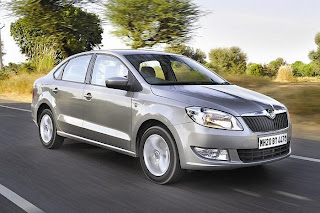
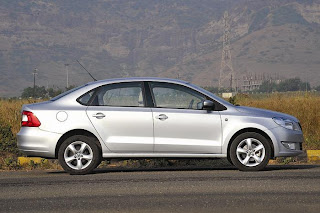
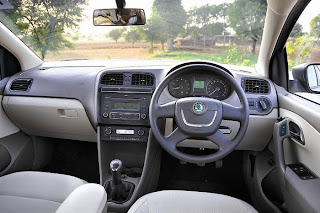
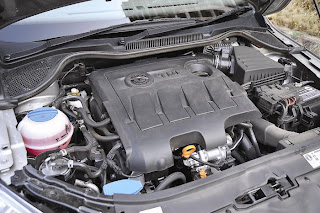
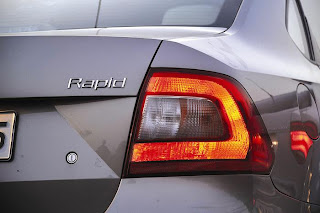
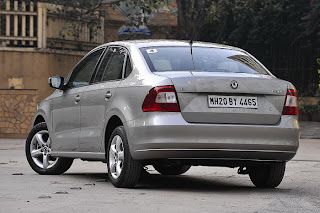



0 comments:
Post a Comment